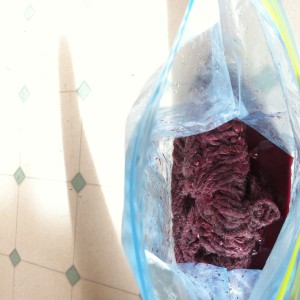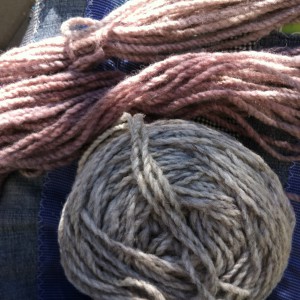This final book of the Around the world reading challenge is from Australia. Textile artist, India Flint, has compiled a collection of techniques as well as a brief history of dyeing and the environmental impact of dyes including on the wearer of the cloth and on the dyer, all imbued with her strong commitment to regionalism. She highlights the influence of her grandmothers and parents in her becoming the artist that she is. Whether at home or on her travels, she uses what grows around her and the weeds growing in ditches to colour her fabrics. I am drawn to this way of working in harmony with nature and her offering of “a more adventurous path to plant colour.”
The instructions and suggestions offered here may not always lead to permanent colours. On the other hand, you will have the satisfaction of being an explorer in your own backyard, searching out hitherto undiscovered potential. If a colour doesn’t last forever, the cloth can simply be dyed again. After all, our bodies change with time as well; our skins and wrinkles and our hair goes grey. Faded cloth is far more easily restored!”
-India Flint, from prologue of Eco Colour.
Each part of the process is a variable to be experimented with,
- the fabric or fibre- mainly natural fibres wool, silk, cotton, linen
- the plants used, which parts of the plant, what season the plant it picked
- the process used to apply the dye including hammering plants onto fabric, length of time in dye bath and temperature
- the mordant, whether the mordant is applied first, during or after dyeing
- the water used, the pH, the mineral content
- any resist techniques like tie-dyeing


I did a couple small experiments in plant dyeing with chokecherries this fall, with very muted results. I hope to use more plant dyes to dye the fabric for the back of my quilt, a project that will be continued in the new year. I appreciate the process, the experimentation and expecting the unexpected. I know I have plants used for dyeing growing in my yard including bedstraw, tickseed, rose, maple leaves, yarrow, goldenrod, black currant, dandelion, sage, hollyhocks, grapes, raspberry and chokecherry and I also like the idea that every plant is a potential dye. Many things that go into the compost can be used as a dye including red onion skins and coffee. Eucalyptus is widely used in her book with dramatic results, but would not be locally available here. I might see if I can get some eucalyptus plant waste from a local florist, but the plants in my yard will keep me busy for a long while.
Be First to Comment